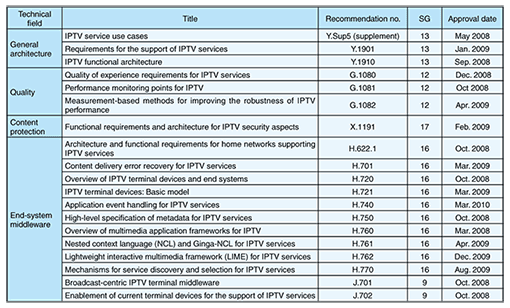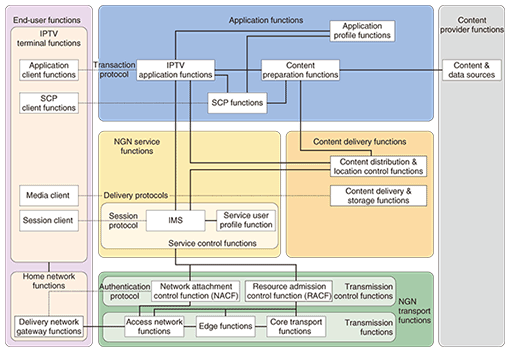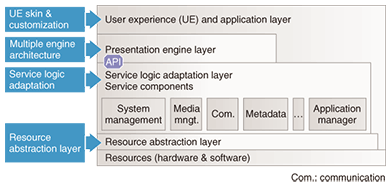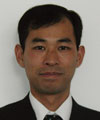 |
|||||||||||||||||||||||
|
|
|||||||||||||||||||||||
|
Global Standardization Activities Vol. 8, No. 5, pp. 41–46, May 2010. https://doi.org/10.53829/ntr201005gls International Standardization of IPTV at ITU-T IPTV-GSIAbstractThis article summarizes the current state of IPTV standardization activities at ITU-T (International Telecommunication Union, Telecommunication Standardization Sector) in various technical fields. We are actively participating in ITU-T’s efforts to develop international standards that take into consideration the specifications of Japan’s IPTV services. A set of Recommendations for IPTV basic service was completed in September 2009. This enabled us to ensure that the Hikari TV IPTV service launched by NTT Plala Inc. in March 2008 conforms to international standards.
1. Outline of IPTV-GSI activitiesStandardization for IPTV is being conducted at ITU-T (International Telecommunication Union, Telecommunication Standardization Sector). ITU has Global Standards Initiatives (GSIs), which are groups intended to deliberate on discussions spanning multiple Study Groups (SGs). IPTV-GSI [1], which covers six SGs (9, 11, 12, 13, 16, and 17), was established in January 2008 to take over the work already done by FG IPTV (Focus Group on IPTV) [2]. By October 2009, it had held eight meetings. On each occasion, 30–80 contributions were submitted and actively discussed among 60–70 participants. IPTV-GSI has completed 19 Recommendations (including Supplements) and discussed approximately 70 draft Recommendations. The completed Recommendations are shown in Table 1. The ones based on deliverables produced by FG IPTV were close to completion as of December 2009.
2. Overall architecture2.1 Supported IPTV services and service requirementsITU-T defines IPTV services [3] as “multimedia services such as television/video/audio/text/graphics/data delivered over IP-based networks managed to provide the required level of QoS/QoE, security, interactivity and reliability” (QoS: quality of service, QoE: quality of experience). On the basis of this definition, the IPTV services to be studied by ITU-T were established in Supplement Y.Sup5, and the service requirements were established in Recommendation Y.1901. The definition of IPTV services encompasses not only simple TV services but also services that involve a combination of communication and video delivery, such as interactive advertising, video telephony, and email services. Among the wide variety of IPTV services, studies are currently being targeted at the provision of IPTV basic services in the form of linear TV (ordinary broadcast-type services) and video on demand (VoD). A set of Recommendations for the provision of IPTV basic services over the NGN (Next Generation Network) has been established as Recommendation Y.2007 (NGN Capability Set 2). 2.2 IPTV functional architecture and NGN architectureThe functional architecture of IPTV is being studied by SG13. Although SG13 is the group responsible for studying the NGN, it is also studying methods for deploying IPTV functions to networks other than the NGN such as cable television (CATV) networks, as set forth in Recommendation Y.1910. These function groups include Japanese domestic IPTV service specifications. The functional architecture for the case where IMS (IP multimedia subsystem) is used on the NGN is shown in Fig. 1. Since IPTV is one of the principal services on the NGN, an important area of investigation is that of IP multicast functions for efficient provision of linear TV services. Other issues being studied include detailed specifications of content delivery functions, services for roaming to other networks, and cooperation with home networks.
3. QualitySG12 inherited two QoE-related documents from FG-IPTV: (1) Quality of experience requirements for IPTV (2) Performance monitoring for IPTV The first deals with the QoE requirements of IPTV services and was published as Recommendation G.1080. This Recommendation extends Recommendation G.1010 (end-user multimedia QoS categories), where the QoE classes of communication services are defined in general terms, and specifies guidelines and provisional targets for issues such as the quality of video/audio/text/graphical media and the quality of control functions (including channel zapping time). The second document deals with (a) monitoring points for in-service quality monitoring, (b) parameters to be monitored at these monitoring points, and (c) quality assessment methods for QoE estimation. Of these, (a) was studied first and the results were set forth in Recommendation G.1081. Items (b) and (c) are still being investigated. In addition, Recommendation G.1082 describes the framework to be used for improving quality by using monitoring results. Areas currently being studied include methods for reporting monitored information to the quality management server (statistical aggregation methods, report frequency, etc.). 4. Content protectionThe requirements and general functions for service and content protection (SCP) functions were set forth in Recommendation X.1191. As shown in Fig. 1, SCP is established from the SCP functions that form part of the application functions and from the SCP client functions that form part of the functions of IPTV terminals (which are usually receivers), and it operates through a process of cooperation between the transmitting and receiving sides. The main functions are encryption and playback/usage restriction functions for content protection and licensing functions for implementing pay-TV services. In Japan’s IPTV services, the content protection system used by providers such as NTT Plala Inc. based on Japan’s law concerning broadcast on telecommunications services [4], [5] conforms to this Recommendation. Subjects that are currently being studied on the basis of Recommendation X.1191 include a method for transforming content received by a receiver for use with the SCP of a different portable terminal, a method for upgrading a terminal’s own SCP to keep up with the addition of new services and expansion of existing services, and a method for swapping between SCP functions to facilitate subscription to other IPTV services. 5. End systemAn IPTV end system is not just a terminal but a series of systems that also includes the middleware and home network. An IPTV terminal is the hardware that the user comes into direct contact with. It accepts operations from the user to indicate content and services. Recommendations H.720 and H.721 give general requirements for IPTV terminals and a basic model of terminals compatible with IPTV basic services such as linear TV and VoD, respectively. Recommendation H.721 is particularly significant in that it was based on Japanese IPTV service specifications as used by Hikari TV and is thus an international standard developed from Japanese specifications. With regard to IPTV middleware, an investigation is under way into the application programming interface (API). The software configuration including the API is shown in Fig. 2. In addition to the overview of the API in Recommendation H.760, there are descriptions of the Ginga-NCL script language (NCL: nested context language) and LIME (lightweight interactive multimedia framework) in Recommendations H.761 and H.762, respectively. H.762 is based on broadcast markup language, which is used for digital broadcasts in Japan. Novel services can be created by exploiting the interactivity of IPTV and a variety of event information generated by users’ IPTV terminals. The processing of this sort of event information is described in Recommendation H.740. Furthermore, Recommendation H.770 covers service discovery and selection. Subjects for future study include metadata related to these services.
An IPTV home network is a residential network that allows an IPTV terminal to cooperate with other home electrical appliances. Home networks have been studied as an application of general importance beyond IPTV, and the basic functions of home networks are set forth in Recommendation H.622.1. Studies are currently under way into the QoS and remote management of home networks. 6. Other standardization trendsIn 2005, a North American organization called the Alliance for Telecommunications Industry Solutions (ATIS) set up an IPTV Interoperability Forum (ATIS-IIF) [6] to look into the standardization of IPTV from many aspects including IPTV architecture, service discovery, metadata, and content protection requirements. ATIS-IIF and ITU-T are working together by exchanging liaison letters and cooperating on issues such as requirements and functional overviews. Meanwhile in Europe, a standardization project of the European Telecommunications Standards Institute (ETSI) called TISPAN (Telecoms & Internet converged Services & Protocols for Advanced Networks) [7] is working on NGN architecture standardization and the like in order to implement IPTV services. On the other hand, in an effort to standardize broadcasting systems, the DVB (Digital Video Broadcasting) project [8]—which is already well known in the field of digital broadcasting standards—is also working on IPTV standardization. ITU-T is also cooperating with DVB by exchanging liaison letters. Recently, a group called the Open IPTV Forum [9] was set up. It consists mainly of European telecommunications hardware manufacturers together with telecommunications carriers and consumer electronics manufacturers, and it is working on its own independent IPTV specifications. Services such as Widget TV that provide Internet data content by transmitting it alongside regular broadcast television content are also expanding. Efforts to standardize those services have been initiated by the Hybrid Broadcast Broadband TV (HbbTV) forum [10]. Although that is a different approach to the IPTV approach, it is another method that combines broadcast content with Internet content. 7. Future direction of ITU-T IPTV-GSIITU-T has finished defining IPTV services and summarizing their requirements, architectures, and so on and has completed the Recommendations necessary for implementing IPTV basic services such as linear TV and VoD. Future study topics are likely to include standardization of detailed functions and interoperability, extensions of the basic services to accommodate the delivery of three-dimensional video for example, and standardization aimed at application services such as cooperation with communications. In this process, it will probably be necessary to take into account the relationship between ITU-T and other standards organizations. NTT Laboratories will continue creating convenient and appealing IPTV services for its customers and will develop technologies for implementing those services while continuing its international standardization activities. References
|
|||||||||||||||||||||||
















